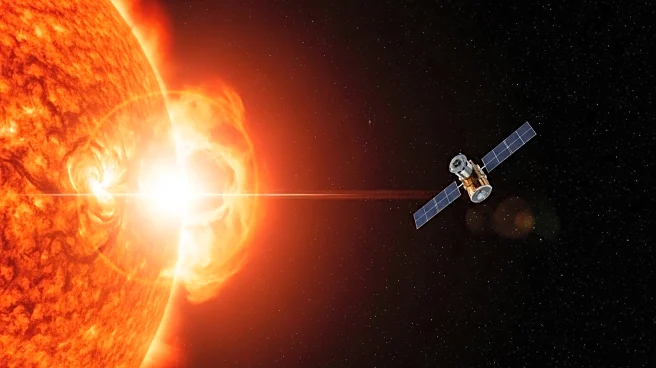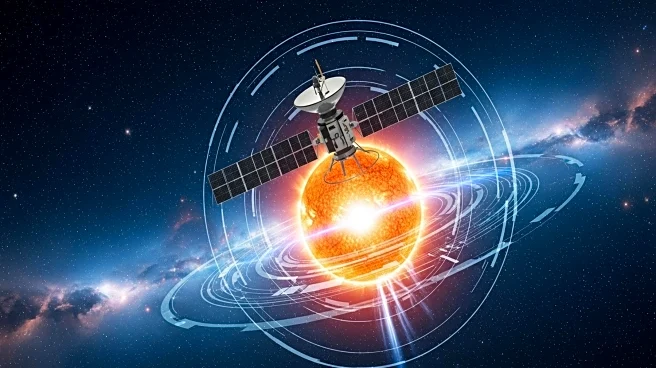What is the story about?
What's Happening?
A striking S-shaped structure appeared on the sun's surface before a solar flare launched a coronal mass ejection (CME) at Earth. The CME, a giant magnetized cloud of plasma, temporarily disrupted Earth's magnetic field, causing a geomagnetic storm. This rare solar outburst, known as a sigmoid eruption, occurs when localized magnetic fields surrounding sunspots get twisted, leading to solar flares. The S-shape structure, resembling the Greek letter sigma, appeared just above the sun's equator and was roughly 78,000 miles across, about 10 times the diameter of Earth.
Why It's Important?
Sigmoid eruptions are significant as they indicate potential solar flares, which can impact Earth's magnetic field and disrupt communication systems. Understanding these eruptions is crucial for predicting space weather and mitigating its effects on technology and infrastructure. The increased solar activity due to the solar maximum highlights the need for continued monitoring and research to anticipate and respond to solar storms. The study of these eruptions contributes to the broader understanding of solar dynamics and their impact on Earth.
Beyond the Headlines
The appearance of the S-shape structure underscores the complexity of solar activity and its potential consequences for Earth. The study of sigmoid eruptions offers insights into the mechanisms driving solar flares and their impact on space weather. As solar activity remains high, continued research is essential for developing strategies to protect technology and infrastructure from solar storms.
AI Generated Content
Do you find this article useful?















